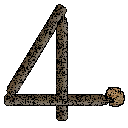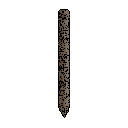Thinking about typical survival games brings a few subjects to my mind. Things like zombies to protect against, open world maps, environmental circumstances to overcome, scavenging for resources, and NPC's to trade with or plunder. All of those things have their place in the genre. But one thing is the most important to me above everything else. Yep, it is crafting!
My generation (I am in my 50's) grew up in an age before computers took over childhood lives. I have often wondered why sandbox games, especially those with deep, complex and often grindy crafting systems, appeal so much to me and my generation. I think I have a clue to the answer. My generation grew up playing with Lincoln Logs, Tinker Toys, Erector Sets, REAL chemistry sets, and a host of other toys which taught us at an early age to be crafters.
Perhaps this is why crafting is so important to me. It is the essence of my gaming experiences. I measure almost every game I have ever played by the quality and quantity of the crafting systems. Would it not make perfect sense if I am going to make a game, that I make it with a core focus on crafting? I think so. In fact, I don't see any point in making a game without a crafting system as a central core component.
Not only is crafting important to me, it is also important that any crafting system have some intrinsic value outside of the game. I know it might sound silly, but games which have crafting systems that closely mimic real-world crafts have always held my fascination and attention over magic or fantasy-based games. I think it is the neatest thing to play a game and learn something about the real world at the same time.
I am convinced that I can make a brutal survival game experience. What is difficult is making a crafting system so fun and rewarding that everything else just doesn't matter. If I can pull that off, I will be happy! This same concept and mentality can be seen in other games from other developers with different goals. Consider Dwarf Fortress. If you haven't heard of it, just stop reading and go play it. Seriously! Still here? Phew, I am glad. Let me continue. Dwarf Fortress has just about the least appealing user interface in all of gaming. Even though there is an overhaul in the works, it is still right now only ASCII characters cleverly used to peek into a world. There are ten-thousand games with a better user interface. But there are perhaps no games ever made with more complex systems in them. The brothers who made and continue to develop that game had a singular goal of making the most complex computer game simulation in the world. I think they have succeeded.
My goal for A Struggle To Survive is to make a survival game that teaches a little bit of real-life skill within a fun, relaxing, and rewarding game experience - centered around hands-on crafting systems. Let me move on now to talk about my crafting approach. I decided early on that I would design the items in the game in the same way as the game system requires. For example, let's consider a Simple Spruce Bed.
 |
| A Spruce Bough |
 |
| A Spruce Bed |
 |
| A Figure 4 Deadfall Trap Setup and Ready |
 |
| A Tripped Trap Where The Critter Was Caught. |
 |
| A Tripped Trap Where The Critter Got Away. |




















No comments:
Post a Comment
Feel free to leave a comment. All comments are moderated.